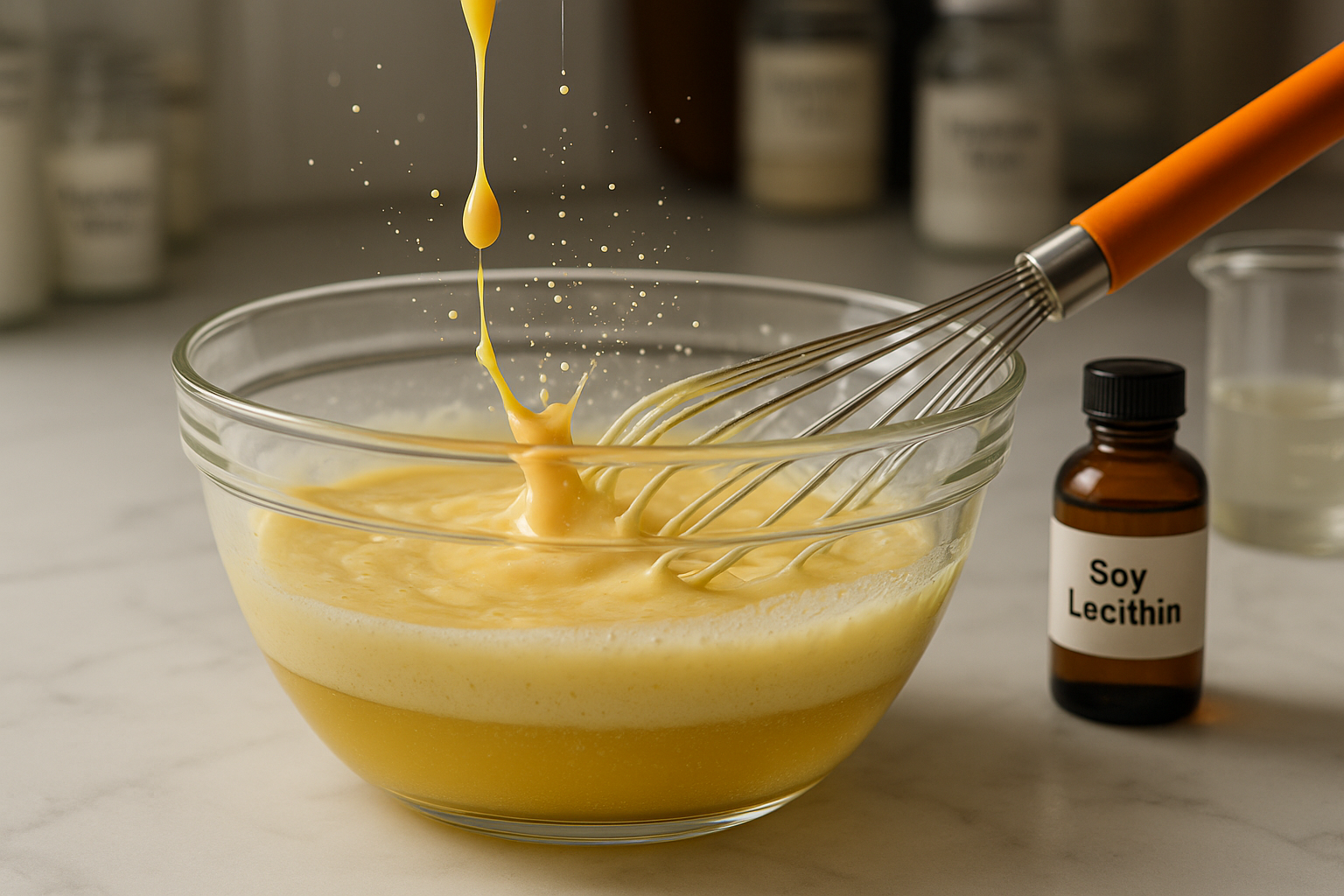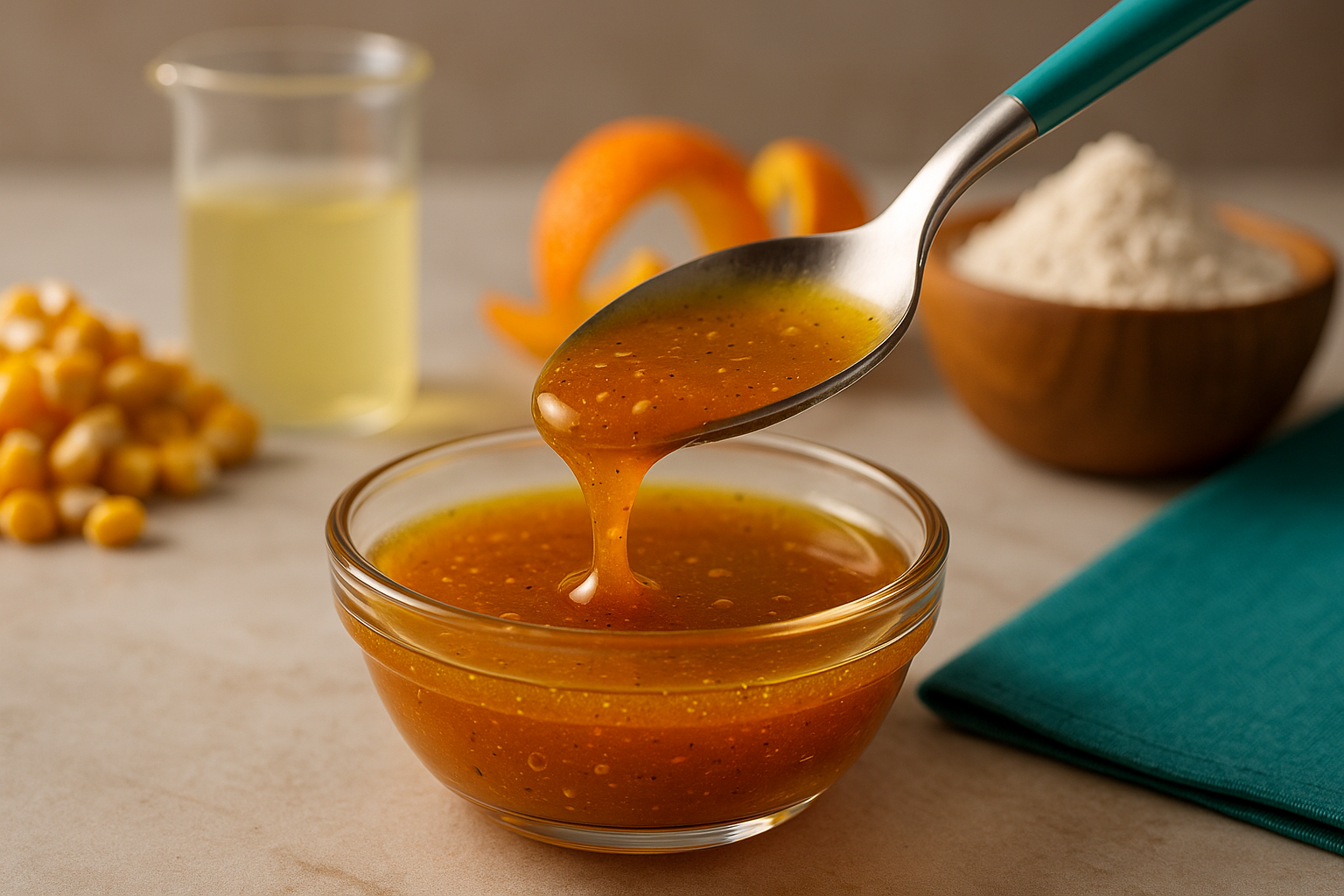
Master Gluten-Free Baking: The Ultimate Guide to Using Hydrocolloids for Perfect Texture
SUBSCRIBE TO OUR BLOG
Promotions, new products, and recipes.
Master Gluten-Free Baking: The Ultimate Guide to Using Hydrocolloids
Gluten-free baking can feel like a puzzle—how do you create bread, cakes, or cookies with the same soft, chewy texture as their gluten-filled counterparts? The secret lies in hydrocolloids, powerful ingredients that mimic gluten’s magic. Whether you’re managing celiac disease or embracing a gluten-free lifestyle, this guide will show you how to use hydrocolloids like xanthan gum and guar gum to transform your recipes. From practical tips to a foolproof bread recipe, let’s dive into the science and art of gluten-free baking with Cape Crystal Brands.
Introduction: Why Gluten-Free Baking Needs Hydrocolloids
Gluten-free baking is booming, with the global market projected to reach $8.3 billion by 2025. But without gluten—the protein that gives dough elasticity and structure—baked goods can turn out crumbly, dense, or dry. This is where hydrocolloids for gluten-free baking come in. These plant-based or microbial ingredients, like xanthan gum and psyllium husk, act as binders, thickeners, and stabilizers, ensuring your bread rises and your cakes stay moist.
At Cape Crystal Brands, we specialize in premium hydrocolloids that make gluten-free baking accessible and delicious. In this guide, we’ll explore how these ingredients work, compare their properties, and share expert tips to elevate your kitchen creations.
Why Hydrocolloids Are Essential for Gluten-Free Baking
Gluten provides structure, elasticity, and moisture retention in traditional baking. Without it, gluten-free flours (like rice or almond flour) struggle to hold together. Hydrocolloids step in to:
- Bind Ingredients: Mimic gluten’s cohesive properties, preventing crumbly textures.
- Improve Elasticity: Allow dough to stretch and rise, creating airy bread.
- Retain Moisture: Keep baked goods soft and fresh longer.
- Enhance Mouthfeel: Deliver a satisfying texture, from chewy bread to creamy pastries.
Common hydrocolloids include xanthan gum, guar gum, psyllium husk powder, and locust bean gum, each with unique strengths. Let’s compare them to find the best options for your recipes.
Comparing Top Hydrocolloids for Gluten-Free Baking
Choosing the right hydrocolloid depends on your recipe and desired texture. Below, we compare four popular options available at Cape Crystal Brands, with a handy table for quick reference.
| Hydrocolloid | Source | Best For | Benefits | Drawbacks | Usage (per cup of flour) |
|---|---|---|---|---|---|
| Xanthan Gum | Microbial fermentation | Bread, cookies, cakes | High viscosity, excellent binding, improves elasticity | Can be gummy if overused | 0.5–1 tsp |
| Guar Gum | Guar bean seeds | Bread, muffins | Cost-effective, moisture retention, synergistic with xanthan | May cause digestive issues in excess | 0.5–1 tsp |
| Psyllium Husk | Plantago ovata seeds | Bread, pizza crust | High fiber, gel-forming, clean label | Can make dough dense if overused | 1–2 tbsp |
| Locust Bean Gum | Carob tree seeds | Pastries, cakes | Creamy texture, stabilizes emulsions | Less effective alone, higher cost | 0.5 tsp |
Xanthan Gum: The Gluten-Free Baking Star
Xanthan gum is a go-to for xanthan gum in gluten-free bread due to its ability to provide structure and prevent crumbling. It’s ideal for soft, chewy textures, as seen in our Cloudlight Gluten-Free Bread recipe below.
Guar Gum: The Budget-Friendly Binder
Guar gum enhances dough elasticity and moisture retention, making it a great partner or alternative to xanthan gum. It’s perfect for fluffy muffins and cost-conscious bakers.
Psyllium Husk Powder: The Health-Conscious Choice
Psyllium husk powder forms a gel-like structure, adding fiber and moisture. It’s a natural choice for health-focused recipes like whole-grain bread.
Locust Bean Gum: The Texture Enhancer
Locust bean gum shines in creamy pastries, often paired with other hydrocolloids for optimal results. It’s less common in bread but excellent for cakes.
Practical Tips for Using Hydrocolloids in Gluten-Free Baking
To master gluten-free bread texture, follow these expert tips:
- Measure Precisely: Use small amounts (e.g., 0.5 tsp xanthan gum per cup of flour) to avoid gummy or slimy textures.
- Combine Hydrocolloids: Pair xanthan gum and guar gum (2:1 ratio) for enhanced elasticity and cost savings.
- Adjust Hydration: Gluten-free flours absorb more liquid. Add water gradually to achieve a soft, elastic dough.
- Avoid Overmixing: Mix until just combined to prevent dense bread. Use a stand mixer for consistent results.
- Experiment: Test different blends (e.g., psyllium husk with xanthan gum) to find your perfect texture.
Common Mistakes to Avoid:
- Overusing Hydrocolloids: Too much xanthan gum can make bread gummy.
- Ignoring Recipe Type: Cakes need less binder than bread.
- Skipping Pre-Made Blends: Use a gluten-free flour blend with hydrocolloids for convenience.

Recipe Showcase: Fluffy Gluten-Free Bread with Cape Crystal Brands Hydrocolloids
Try this simple recipe for Cloudlight Gluten-Free Bread, inspired by our blog post on gluten-free bread. It uses xanthan gum and psyllium husk for a soft, airy loaf.
Ingredients
- 2 cups gluten-free flour blend (e.g., rice, tapioca, potato starch)
- 1 cup warm water (110°F)
- 2 tbsp psyllium husk powder
- 1 tsp xanthan gum
- 1 tbsp sugar
- 2 tsp active dry yeast
- 1 tsp salt
- 2 tbsp olive oil
- 2 large eggs
Instructions
- Activate Yeast: Mix yeast, sugar, and warm water. Let sit for 5–10 minutes until foamy.
- Combine Dry Ingredients: In a large bowl, whisk flour blend, xanthan gum, psyllium husk, and salt.
- Mix Wet Ingredients: Add eggs, olive oil, and yeast mixture to dry ingredients. Mix until a soft dough forms.
- Knead and Rise: Knead gently for 2 minutes. Cover and let rise in a warm place for 1 hour.
- Shape and Bake: Shape into a loaf, place in a greased 8x4-inch pan, and bake at 375°F for 35–40 minutes until golden.
- Cool and Enjoy: Let cool before slicing. Store in an airtight container for up to 3 days.
Pro Tip: For extra fluffiness, add 0.5 tsp guar gum to the mix.
Health Benefits of Hydrocolloids in Gluten-Free Baking
Beyond texture, hydrocolloids offer health perks:
- Psyllium Husk: High in soluble fiber, supports digestion and heart health.
- Guar Gum: May lower cholesterol and improve blood sugar control.
- Xanthan Gum: Safe for most, enhances dietary fiber in gluten-free diets.
These benefits align with the growing demand for health-conscious baking, making Cape Crystal Brands’ hydrocolloids a smart choice for mindful eaters.
Hydrocolloid Comparison Chart
Below is a visual comparison of xanthan gum, guar gum, psyllium husk, and locust bean gum based on viscosity, cost, and texture impact. This chart helps you choose the right hydrocolloid for your baking needs.

Comparison of Hydrocolloids for Gluten-Free Baking
Frequently Asked Questions About Hydrocolloids in Gluten-Free Baking
-
What are hydrocolloids, and why are they used in gluten-free baking?
Hydrocolloids are ingredients like xanthan gum and guar gum that bind, thicken, and stabilize gluten-free dough, mimicking gluten’s structure for better gluten-free bread texture. -
How much xanthan gum should I use in gluten-free bread?
For xanthan gum in gluten-free bread, use 0.5–1 tsp per cup of gluten-free flour. Too much can make bread gummy, so measure carefully. Try Cape Crystal Brands’ xanthan gum. -
Can I substitute guar gum for xanthan gum in gluten-free recipes?
Yes, guar gum can replace xanthan gum at a 1:1 ratio. It’s cost-effective but may add slightly less elasticity. Combine both for optimal results. -
What’s the best hydrocolloid for gluten-free bread texture?
Xanthan gum and psyllium husk are top choices for soft, chewy gluten-free bread texture. Psyllium adds fiber, while xanthan ensures elasticity. -
Is psyllium husk safe for gluten-free diets?
Yes, psyllium husk powder is naturally gluten-free and adds fiber, making it ideal for health-conscious bakers. It forms a gel that improves dough structure. -
Can I use locust bean gum alone in gluten-free baking?
Locust bean gum works best paired with xanthan gum for hydrocolloids for gluten-free baking. It’s great for creamy textures in cakes but less effective for bread. -
Why is my gluten-free bread gummy?
Gummy bread often results from too much xanthan gum or overmixing. Use the recommended 0.5–1 tsp per cup of flour and mix gently. -
Are hydrocolloids vegan and allergen-free?
Most hydrocolloids, like guar gum and psyllium husk, are vegan and gluten-free. Xanthan gum is safe for most but check for corn or soy allergies. -
How do I store hydrocolloids for long-term use?
Store Cape Crystal Brands’ hydrocolloids in airtight containers in a cool, dry place. They typically last 1–2 years. -
Where can I buy high-quality hydrocolloids for gluten-free baking?
Shop Cape Crystal Brands’ hydrocolloid collection for premium xanthan gum, guar gum, and more, perfect for best gluten-free baking tips.
Conclusion: Elevate Your Gluten-Free Baking with Cape Crystal Brands
Mastering gluten-free baking is within reach with the right hydrocolloids. Whether you’re crafting fluffy bread or tender cakes, xanthan gum, guar gum, and psyllium husk from Cape Crystal Brands can transform your recipes. Experiment with our premium ingredients, follow our tips, and try our Cloudlight Gluten-Free Bread recipe to impress your family and friends.
Ready to bake better? Shop our hydrocolloid collection and explore more tips in our blog. Share your creations with us on social media using #CapeCrystalBaking!

|
About the Author Ed is the founder of Cape Crystal Brands, editor of the Beginner’s Guide to Hydrocolloids, and a passionate advocate for making food science accessible to all. Discover premium ingredients, expert resources, and free formulation tools at capecrystalbrands.com/tools. — Ed |
Enjoyed this post? Subscribe to The Crystal Scoop
Food-science tips, ingredient know-how, and recipes. No spam—unsubscribe anytime.
- Choosing a selection results in a full page refresh.



